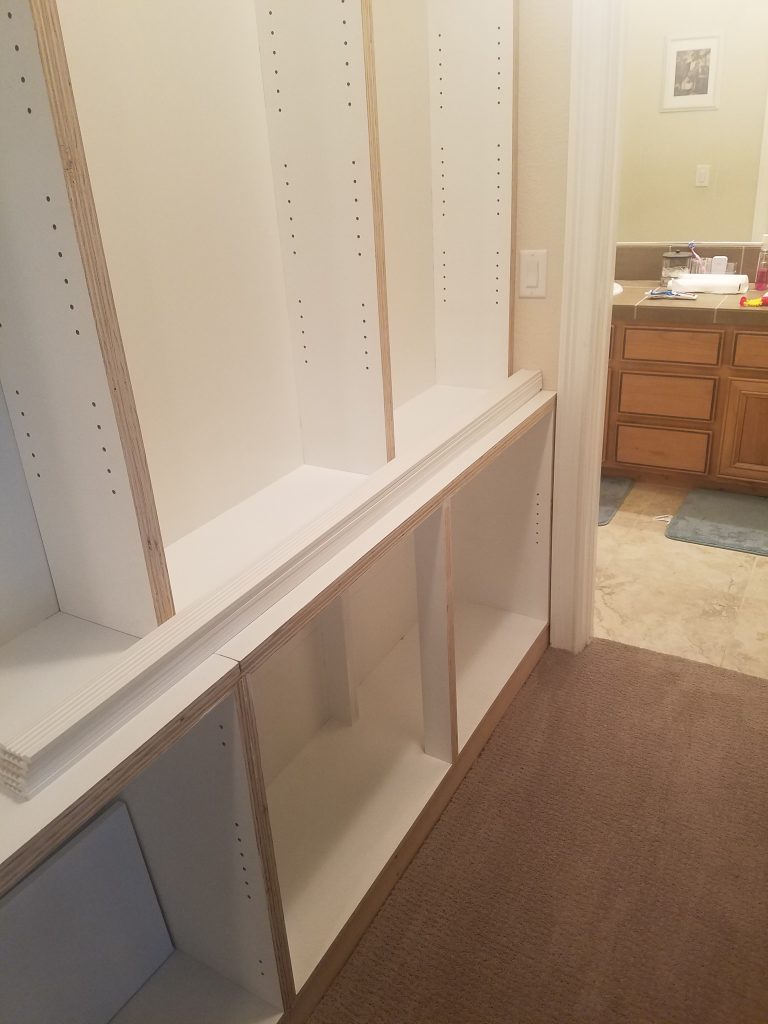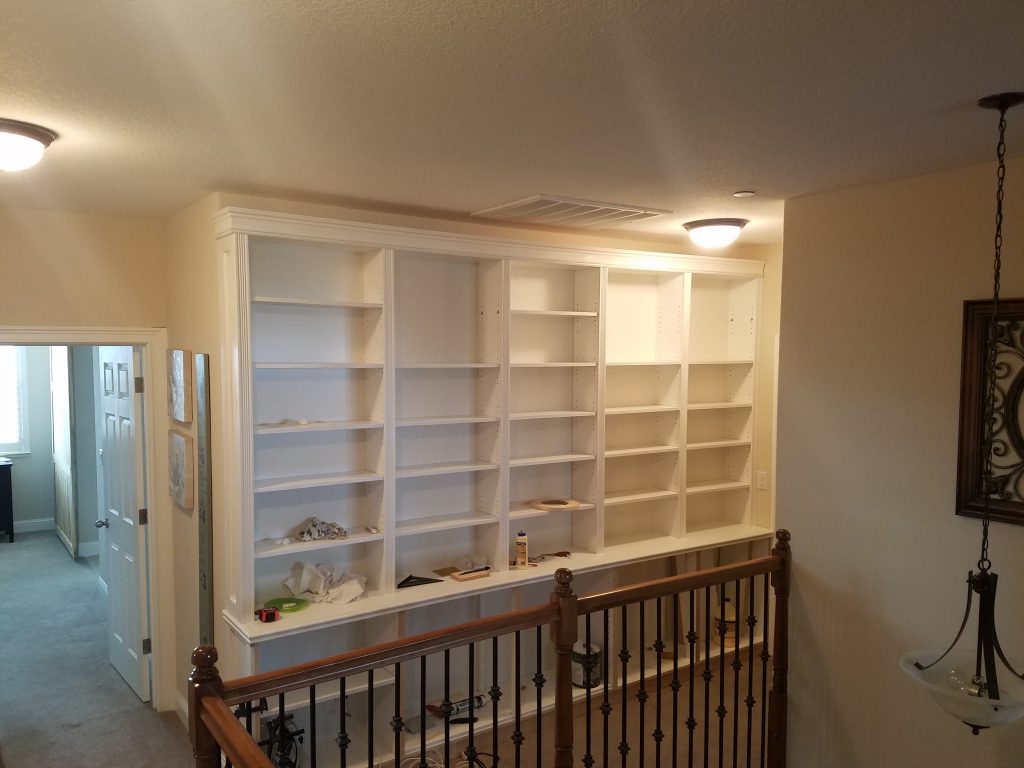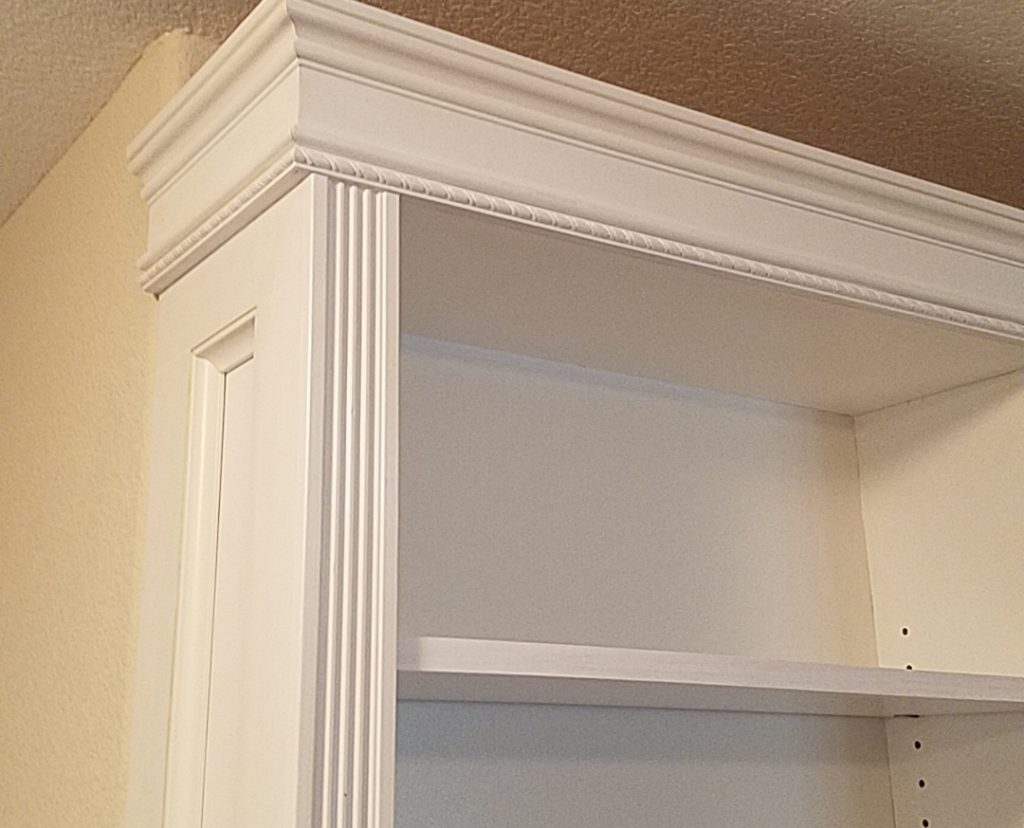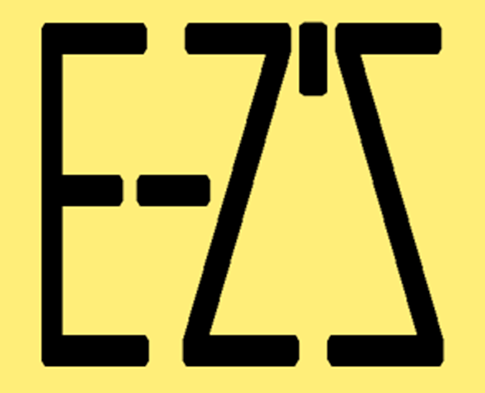This project was built out of necessity. The bottom-half is used for games, puzzles, and other family storage and the top half holds books. I would have liked to buy something for this space but it would have cost more and not fit the space as well
Materials: Total material cost was around $1,000. That’s 9 full sheets of premium cabinet-grade 3/4″ plywood. Trim was $100. Lumber for doors was $100. Door hinges were $100. Some paint, some screws, and other miscellaneous.

Base cabinet interior is 14.5″ deep. Upper shelf interior is 9″ deep. Interior width of each section is almost 25.5″. Depths were limited by the door frame and light switch location in far corner. 
Cutting out the carpet to install the base cabinets was certainly the point of no return. Base cabinets are 3 separate pieces. 2 were double wide (2 x 25.5″ wide). 1 is single wide. The double-wide cabinets were given corresponding vertical supports in center to attach doors to but the open nature behind that support allows for more flexible storage. 
This is the single wide base cabinet and you can see the double-width shelf on its end in the adjacent double-width cabinet. 
It adds plywood cost but each upright section is double thickness (1.5″ thick) This ensures long-term rigidity without requiring a mid-height fixed shelf. 
The air-intake would have prevented me from building all the way to ceiling but I prefer the clean and finished look of the trim without going all the way to the ceiling. 
Trim is mostly complete in this photo but I haven’t yet made the doors. With 6 shelves x 5 units, the total linear bookshelf space will be almost 64 feet.

Proper trim use and finishing is often the factor between something looking clearly DIY or looking “professional”. 
The top horizontal trim piece is actually a combination from multiple trim pieces combined onto an 1/8″ backer board for rigidity. The upright fluted trim is 2.25″ so it gives it a nice overlap beyond the 1.5″ uprights. 
This bullnose profile was trimmed off of a larger trim piece. I wanted the bullnose to overhang past the doors so a 3/4″ piece was inserted between the edge of the plywood and the bullnose. That provided the desired overhang but added another seam to fill and smooth. 
Seams are hard so take your time. This is a lowsy picture but hidden under the smoothness that you can’t even see is a seam between two separate cabinet perpendicular to the center of the fluted trim and 2 seams running along the bullnose trim. It’s smelly and dries fast but Bondo and similar hardening fillers sometimes work better for painted surfaces than wood filler. Sand, paint, repeat, over and over and over. 
9″ depth is all that is needed for most bookshelves. larger books will take up the full depth but 6.5″ or less is common for most books. 
I’m a fan of decorative trim on the outer edges. It breaks up what would be a boring flat piece and can also tie it into matching the doors. This is just 3/4′ flat stock combined with a concave rounded molding.



